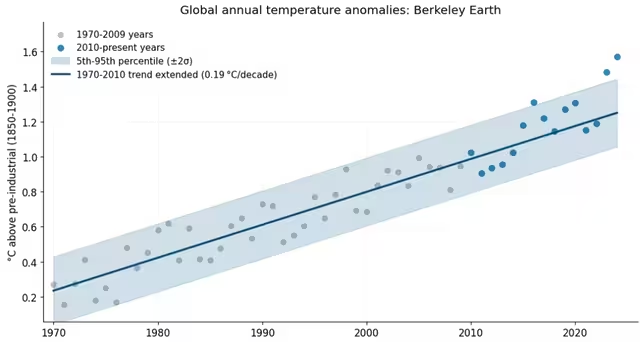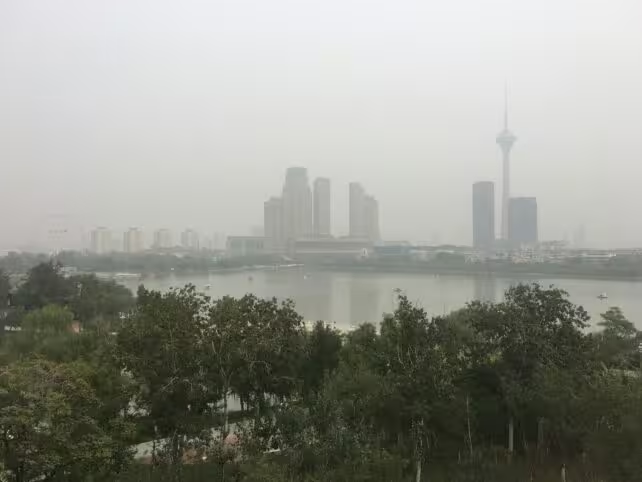6 Minutes
Background: Understanding the Surge in Global Warming
Since around 2010, global warming has accelerated at a remarkable pace, recently producing several record-breaking hot years. While rising greenhouse gas emissions remain the primary engine of climate change, researchers are uncovering new, complex factors influencing the rapid hike in Earth’s average temperature, and recent studies have cast a spotlight on East Asia’s improved air quality—particularly China’s groundbreaking pollution controls—as a major driver of this phenomenon.
For decades, scientists have investigated influences beyond greenhouse gases, such as shipping regulations reducing sulfur emissions and large-scale cloud cover fluctuations. These processes do play a role, but new research suggests that the scale and speed of China's air pollution reduction policies may have a surprisingly significant impact on global temperature trends.
How Air Pollution Masks Global Warming
Air pollution, especially from large quantities of sulfur dioxide released by burning coal and other fossil fuels, has two major environmental consequences. First, aerosol particulates in polluted air contribute to millions of premature deaths globally by worsening respiratory and cardiovascular diseases. Second, these pollutants reflect sunlight back into space—a process called "global dimming"—which cools Earth's surface and partially counteracts the warming driven by greenhouse gases.
Over the last century, this man-made 'sunshield' is estimated to have suppressed human-induced warming by up to 0.5°C. But this effect comes at a severe health cost and does nothing to address the underlying accumulation of heat-trapping gases such as carbon dioxide and methane.

China’s Landmark Air Quality Improvements
Since 2013, East Asia has witnessed an unprecedented reduction in sulfur dioxide emissions—by as much as 75%. China, in particular, has implemented stringent air quality policies to curb industrial emissions, enforce clean energy transitions, and protect public health. Remarkably, these national clean air initiatives have gathered steam just as the rate of global temperature increase began to accelerate.
While earlier research considered the 2020 crackdown on sulfur emissions in international shipping, scientists found those changes too recent and too minor to explain the full extent of rising temperatures. Instead, the most significant contributor to the recent warming surge may lie in the vast, regional cleanup of Asian air pollution.
Modeling the Impact: Unveiling Hidden Warming
To probe this hypothesis, a consortium of climate modelers conducted an extensive study using 160 computer simulations across eight state-of-the-art global climate models. The research simulated reductions in East Asian aerosol pollution that closely matched real-world efforts since 2010.
The simulations revealed that the removal of pollution-induced cooling accounted for an average additional warming of approximately 0.07°C globally. Although this value is modest compared to the long-term 1.3°C rise since the Industrial Revolution, it is sufficient to explain the unexpected acceleration in global warming over the past decade—particularly when isolating human-induced changes from natural climatic cycles like El Niño.
Quantifying the Temperature Surge
Based on the historical trend before 2010, scientists predicted an increase of around 0.23°C. However, actual measurements recorded a 0.33°C warming since that time. The research attributes about 0.1°C of this jump to the East Asian air quality improvements. Other contributing factors include changes in global shipping sulfur emissions and a recent climb in atmospheric methane levels.

Changing Clouds and the Role of Aerosols
Aerosol pollution cools the planet not only by reflecting sunlight but also by modifying cloud properties, making clouds brighter and more reflective. East Asia’s pollution cleanup means less particulate matter is lofted into the atmosphere, reducing both the direct sun-blocking effect and the induction of reflective clouds, especially over the North Pacific.
Satellite observations and climate models confirm this pattern, showing increased warming over the North Pacific, aligning with wind currents that carry East Asian pollutants across the ocean. Importantly, these findings help reconcile model projections with observed temperature trends, refining future climate impact assessments.
Implications and Future Prospects
The study underscores a crucial paradox for climate policy: while reducing air pollution is an urgent public health imperative—potentially saving millions of lives—it also removes the temporary cooling shield aerosols provide. This exposes the world more fully to the warming impact of continued greenhouse gas emissions from fossil fuels.
However, experts emphasize that greenhouse gas reduction remains the most critical climate action. The recent acceleration in global warming, triggered by cleaner air, is a stark reminder that only reducing carbon dioxide, methane, and other long-lived greenhouse gases can deliver lasting climate stability.
As air pollution dissipates rapidly from the atmosphere, its absence may cause only a short-term burst in warming. Still, the world must prepare for a climate already destabilized by decades of masking effects—and recognize that improved air quality and decisive climate action must go hand in hand.
Conclusion
The rapid improvement of air quality in China and East Asia has been a public health triumph, but it has also inadvertently revealed the true pace of human-driven global warming. As analysts and policymakers grapple with the challenge of balancing clean air initiatives and climate targets, this research highlights the intricate, intertwined nature of Earth’s climate system. The results underscore the urgent need for comprehensive greenhouse gas mitigation to achieve a stable and healthy global environment in the decades to come.
Source: theconversation


Leave a Comment